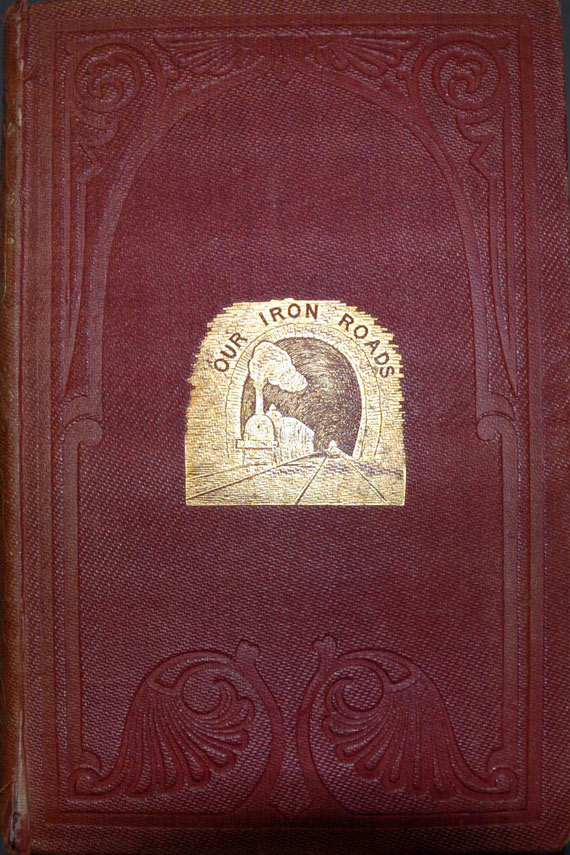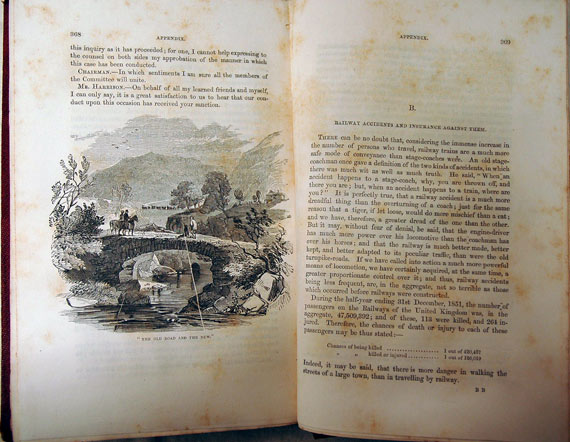Cabinet 2: Railways – In the Beginning


Frederick S. Williams, Our Iron Roads: Their History, Construction, and Social Influences. London: Ingram, Cooke, and Co., 1852.
In 1843, the average speed of a train was 211/2 miles per hour. A train on the London to Birmingham line reached speeds of 27 miles per hour, while on other occasions, a top speed (downhill) of 60 miles an hour was reached, six times that of a fast stage-coach. It is no wonder that train travel caused anxieties. There were also antipathies. John Ruskin was appalled at the wanton destruction of the landscape as another line or tunnel was created. And with train names like Wizard, Dragon, Lightning, and Wildfire, accidents were bound to happen. The first recorded railway fatality occurred in 1830 at the opening of the Liverpool and Manchester Railway. William Huskisson, statesman, financier, and ardent supporter of rail, was knocked off balance and fell under the wheels of Stephenson’s Rocket. Transported safely away by train, he died soon after.

